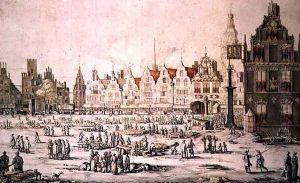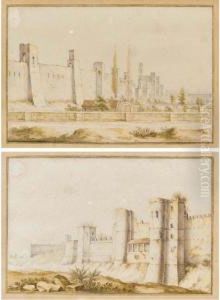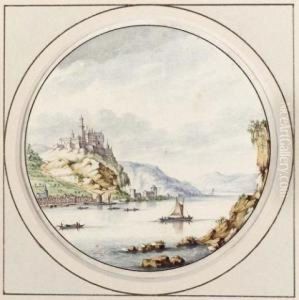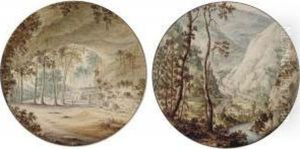Jan I van Call Paintings
Jan I van Call, also known as Johann van Call, was a Dutch Golden Age artist, born in 1656 in The Hague, Netherlands. He came from a family of artists; his father, Jan van Call the Elder, was also a painter, and his uncle, Willem van Call, was an engraver. Jan I van Call is primarily known for his work as an engraver and draftsman, specializing in landscapes, topographical views, and maritime scenes.
Van Call's artistic career was marked by the Baroque style that dominated the 17th century, with a particular emphasis on the detailed depiction of nature and architecture. He was skilled in creating expansive vistas that often included classical ruins or Italianate elements, reflecting the influence of the grand tour on European artists of the period. This was a common practice among Northern European artists, who frequently incorporated Mediterranean motifs into their work to cater to the tastes of their clientele, who were fascinated with the exotic and classical heritage of Southern Europe.
Despite the lack of extensive documentation on his life, it is known that Jan I van Call traveled extensively, which greatly influenced his art. His journeys took him through various parts of Europe, including France and Italy, where he absorbed the local scenery and architectural styles. His travels are evident in the geographical diversity found in his works, many of which depict locations he visited.
Van Call's output includes numerous engravings, often based on his own drawings or designs by other artists. His engravings were widely distributed, making his work accessible to a broader audience. This contributed to his popularity during his lifetime and allowed his landscapes and maritime scenes to influence other artists and engravers.
Jan I van Call's death occurred in 1703 in the city of his birth, The Hague. Although he is perhaps not as widely recognized today as some of his contemporaries, his work remains an important part of the Dutch Golden Age's artistic legacy, providing insight into the period's aesthetic preferences and the European fascination with travel and classical antiquity. His engravings continue to be appreciated for their craftsmanship and compositional skill.



